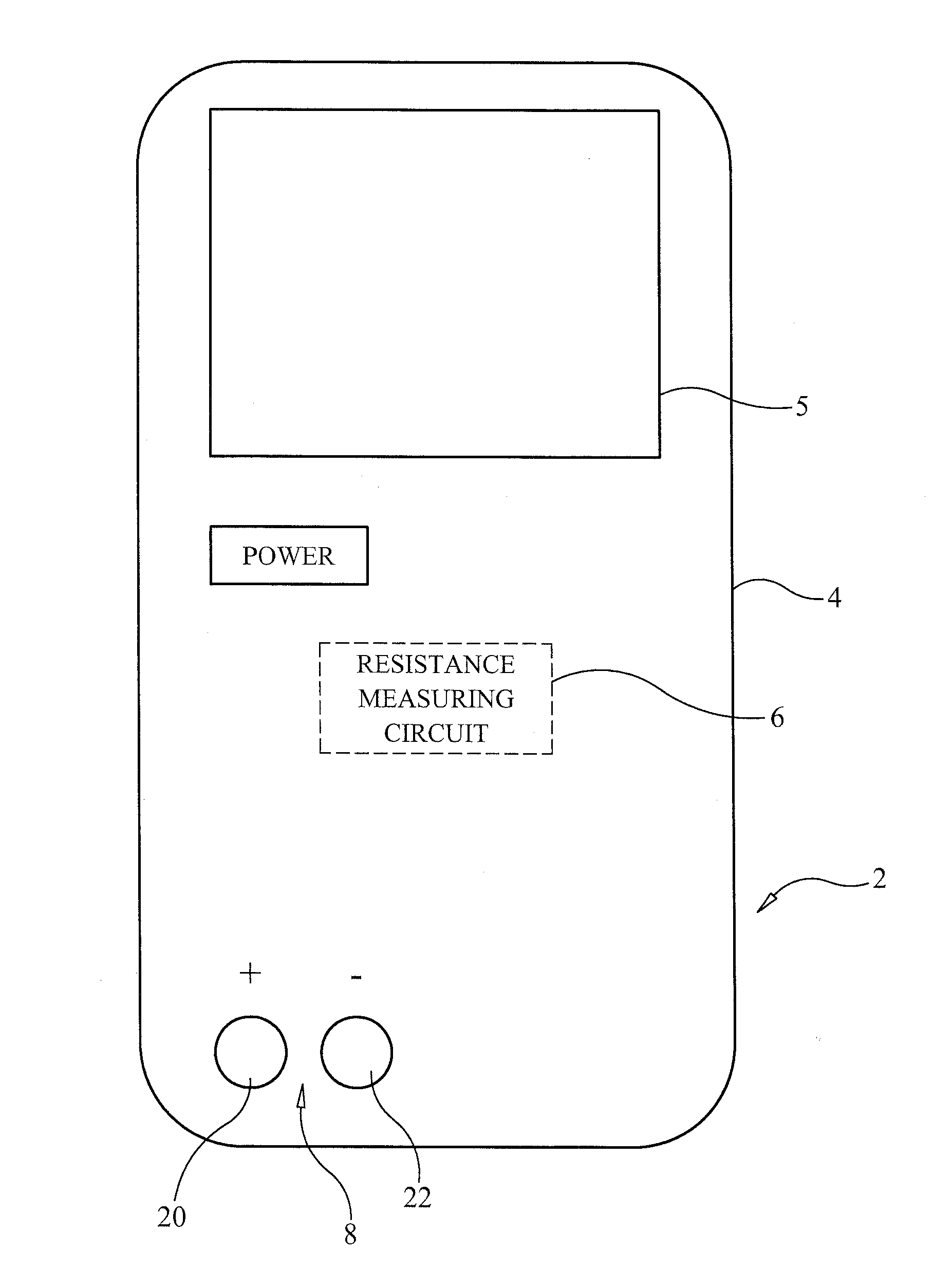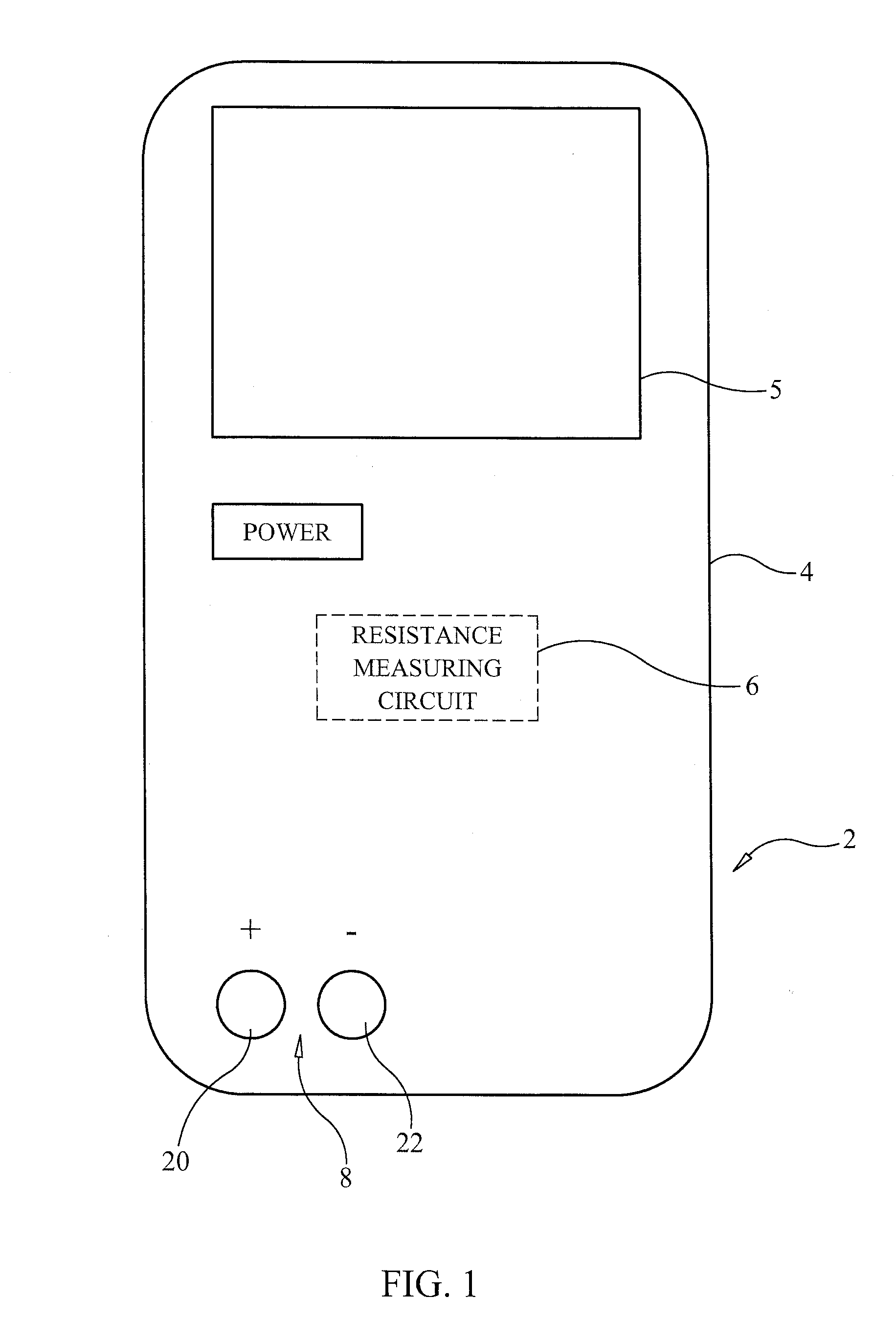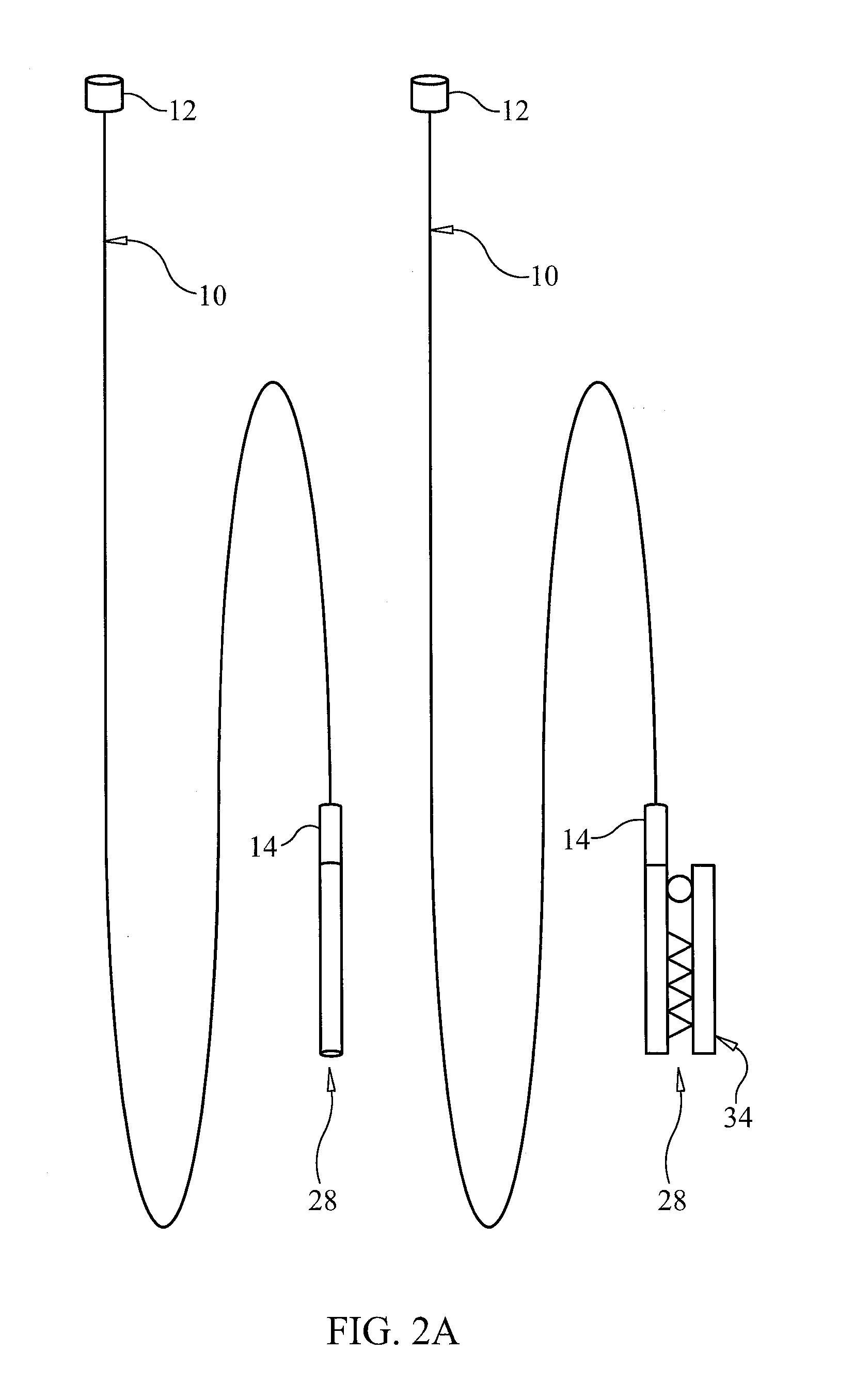Method and device for non-invasively determining the use of non-electrically conductive plumbing in a residence
a non-electrical conductive, non-invasive technology, applied in the direction of resistance/reaction/impedence, measurement devices, instruments, etc., can solve the problems of inability to visually inspect, many of these homes experienced devastating losses, and the polybutylene piping is now known to be defective,
- Summary
- Abstract
- Description
- Claims
- Application Information
AI Technical Summary
Benefits of technology
Problems solved by technology
Method used
Image
Examples
Embodiment Construction
[0029]A preferred form of the method of the present invention, and the device utilized to implement the method, will now be described. In accordance with one form of the present invention, a device 2 for non-invasively determining the presence or absence of non-electrically conductive plumbing in a residence includes a main body 4 having a circuit 6 therein which measures electrical resistance between two points, the circuit 6 being electrically coupled to a display 5 for displaying the measured resistance to a user. Such a device is commonly referred to as an ohmmeter, or may be incorporated in a device which can measure voltage (or current), such device being commonly referred to as a volt / ohmmeter (VOM) or multimeter. In a preferred form, device 2 is a volt / ohmmeter (VOM). The main body 4 also preferably includes at least two terminals 8 in electrical communication with the resistance measuring circuit 6 capable of receiving a plurality of testing probes 10. As will be described ...
PUM
 Login to View More
Login to View More Abstract
Description
Claims
Application Information
 Login to View More
Login to View More - R&D
- Intellectual Property
- Life Sciences
- Materials
- Tech Scout
- Unparalleled Data Quality
- Higher Quality Content
- 60% Fewer Hallucinations
Browse by: Latest US Patents, China's latest patents, Technical Efficacy Thesaurus, Application Domain, Technology Topic, Popular Technical Reports.
© 2025 PatSnap. All rights reserved.Legal|Privacy policy|Modern Slavery Act Transparency Statement|Sitemap|About US| Contact US: help@patsnap.com



